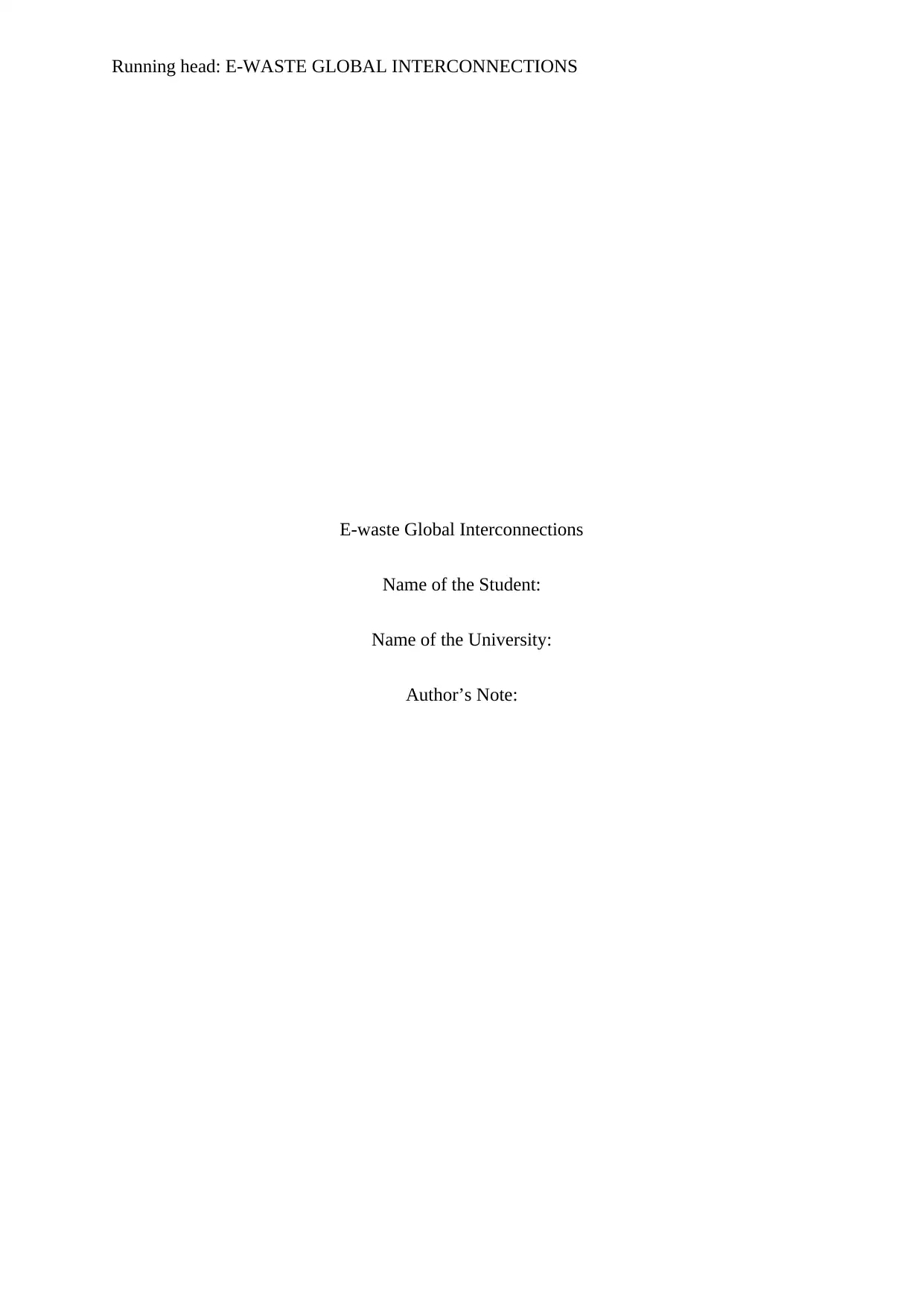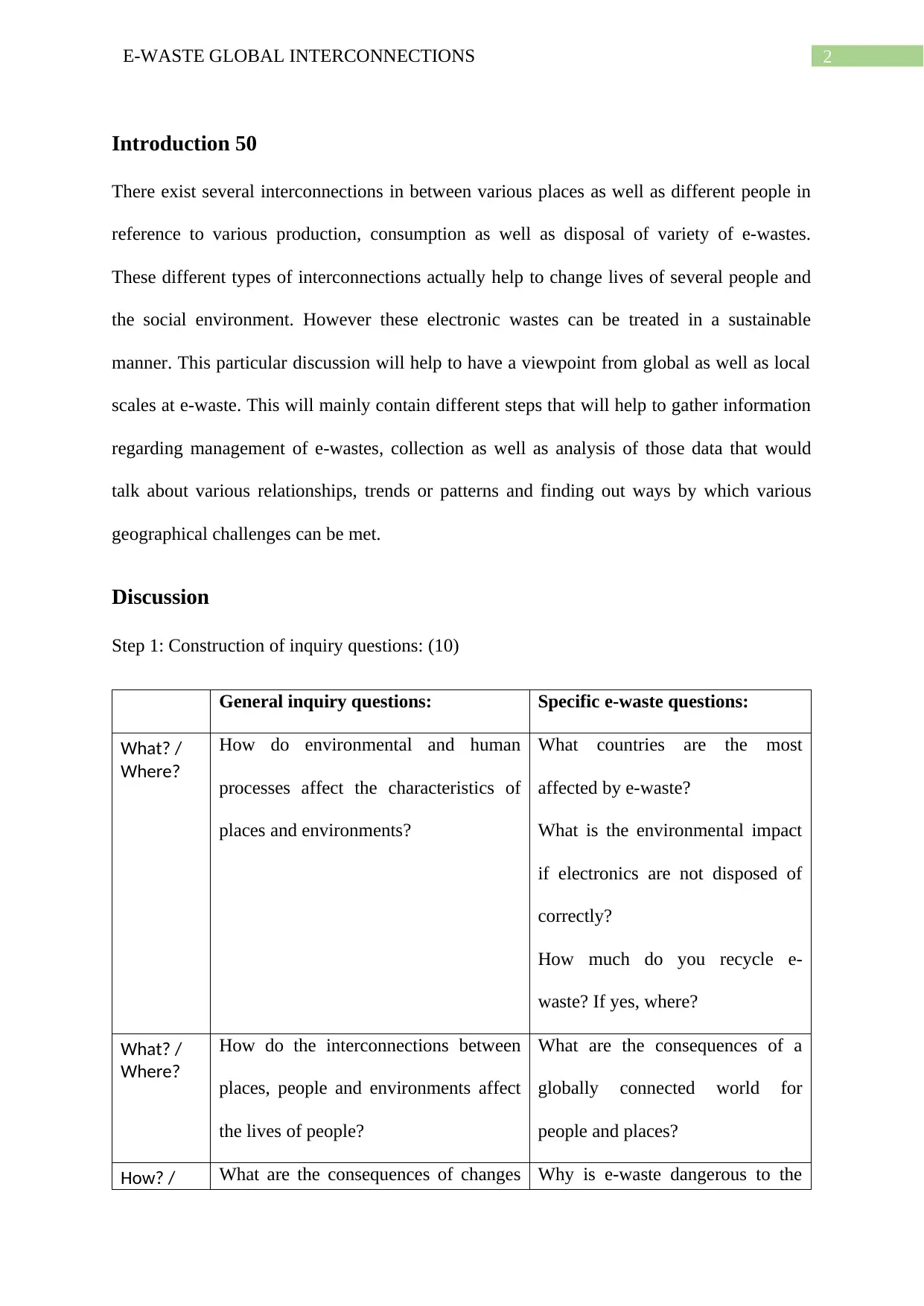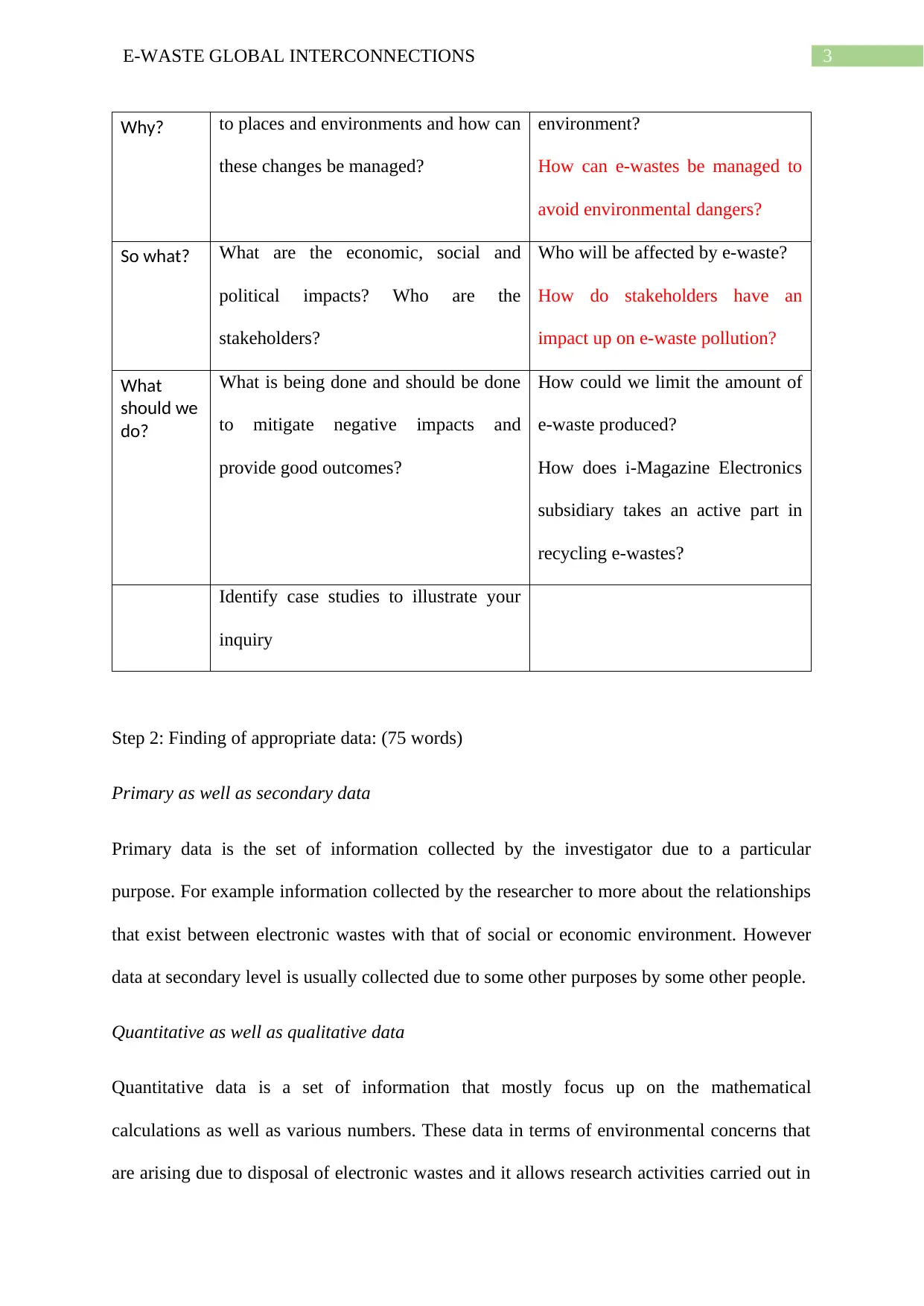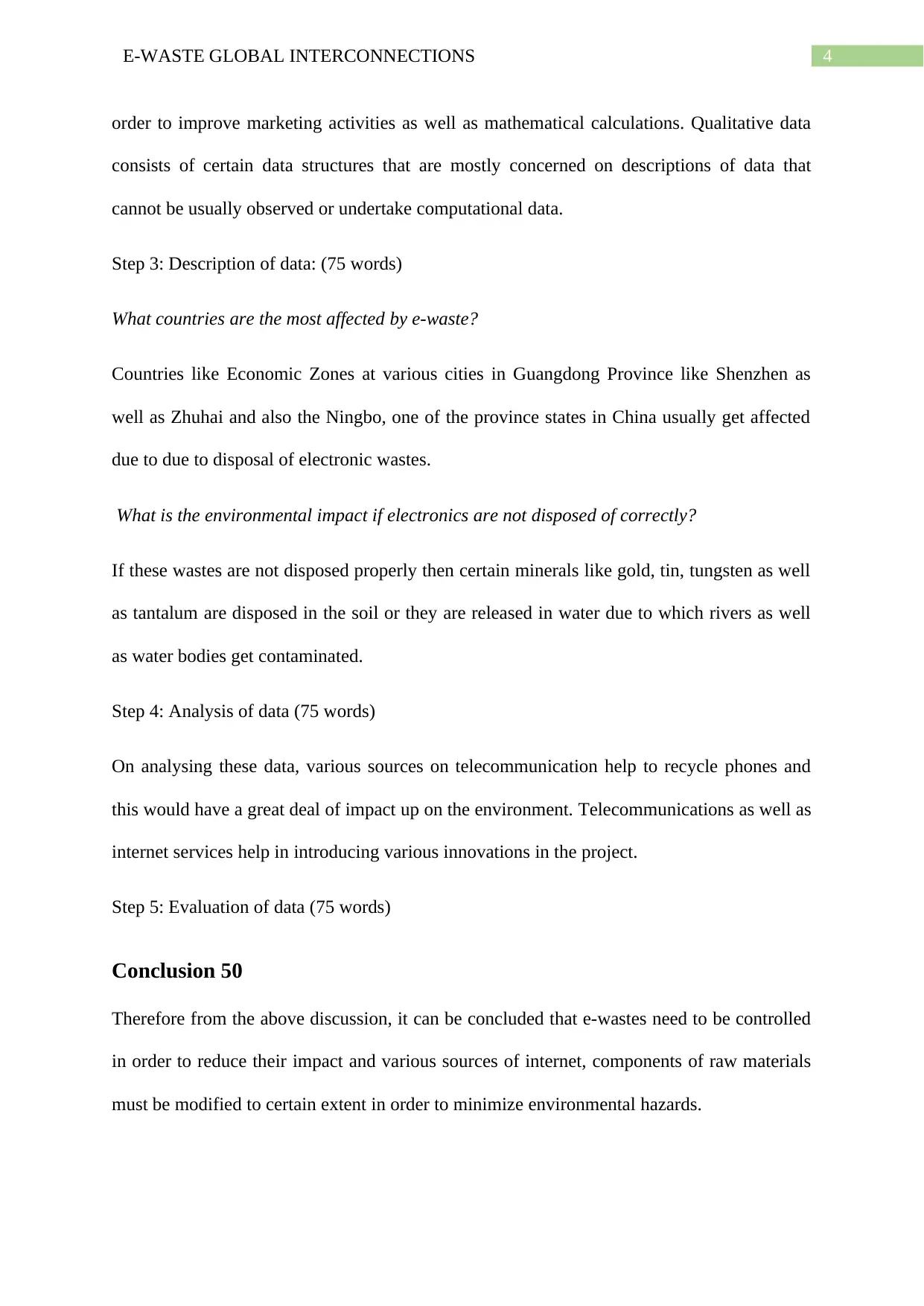Environmental Science: E-waste Global Interconnections Project
VerifiedAdded on 2022/12/18
|6
|808
|1
Project
AI Summary
This project delves into the intricate web of e-waste's global interconnections, examining the environmental and human impacts associated with the production, consumption, and disposal of electronic waste. The project begins by formulating inquiry questions to investigate the topic from both global and local perspectives. It then explores the interconnections between places, people, and environments, focusing on how these connections influence lives and the environment. The analysis includes identifying countries most affected by e-waste and the environmental consequences of improper disposal, such as soil and water contamination. The project also considers the role of telecommunications and internet services in recycling efforts and introduces innovations in the project. The conclusion emphasizes the importance of controlling e-waste to mitigate its impact and suggests modifying raw materials to minimize environmental hazards. The project provides a comprehensive overview of e-waste management and its implications for sustainable development.
1 out of 6













![[object Object]](/_next/static/media/star-bottom.7253800d.svg)